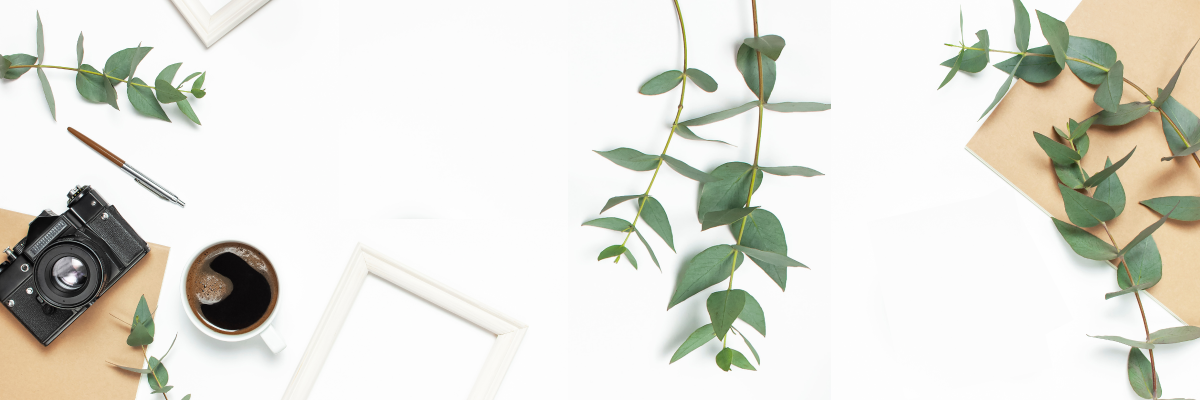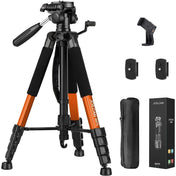Photography is an art form that allows us to capture and freeze a moment in time. It allows us to share our unique perspective with the world, and there is no denying the power of a well-composed photograph. Whether you're an amateur or a seasoned professional, understanding the basics of photography composition can take your visuals to new heights and help you create stunning images that leave a lasting impact. In this article, we will explore the art of photography composition and unravel some tips and techniques to elevate your photography skills.
The Rule of Thirds: A Fundamental Technique
One of the fundamental principles of photography composition is the rule of thirds. Imagine breaking an image down into nine equal parts by drawing two vertical lines and two horizontal lines, creating a grid. This grid creates four intersecting points, known as the power points. Placing your main subject or points of interest on these power points or along the grid lines can add balance and visual interest to your photograph.
While the rule of thirds is a great starting point, don't be afraid to experiment and break the rules. Sometimes placing your subject dead center can create a strong and impactful image. Rules are meant to be broken, but it's important to understand them first before you can effectively break them.
Leading Lines: Guiding the Viewer's Eye
Leading lines are elements within a photograph that draw the viewer's eye into the image, guiding them towards the main subject or point of interest. These lines can be literal, such as a winding road, a river, or a row of trees. They can also be implied, like the edge of a building, a shadow, or a line formed by the placement of objects within the frame.
When incorporating leading lines into your composition, be mindful of how they interact with other elements in the image. Experiment with different angles and perspectives to find the most effective ways to lead the viewer's eye and create a sense of depth and dimension within your photographs.
Framing: Adding Depth and Context
Framing is a technique in which you use elements within your photograph to create a frame around your subject. This frame can be natural, like a window, an archway, or branches, or it can be something you create yourself, like using your hands to frame a distant object.
Framing not only adds depth and context to your photograph but also helps draw attention to your subject. It can create a sense of intrigue and make the viewer feel as though they are peering into a secret world within the frame. Experiment with different framing elements to add visual interest and tell a more compelling story through your images.
Symmetry and Balance: Creating Harmonious Compositions
Symmetry and balance are powerful tools in photography composition. Symmetrical compositions can create a sense of order and calmness, while imbalanced compositions can add tension and dynamism to your images.
When using symmetrical compositions, ensure that your subject is perfectly centered and that the elements on either side of the frame are evenly balanced. If you want to create a more dynamic composition, consider using an off-center placement of your subject to create imbalance and lead the viewer's eye in a deliberate way.
Perspective: Exploring Different Angles
Perspective plays a crucial role in photography composition. Don't be afraid to get low or high, move around, and experiment with different angles to find the most compelling perspective for your subject. Changing your perspective can completely transform the mood and impact of your photographs.
Try shooting from ground level to capture unique and often overlooked details. Alternatively, you can climb to higher ground or use a wide-angle lens to capture a broader view of the scene. Perspective is a powerful tool that allows you to bring your own creative vision to life.
Rule of Space: Creating Breathing Room
The rule of space is a composition guideline that suggests leaving ample space in the direction where your subject is facing or moving. This provides a sense of freedom and allows your subject to “breathe” within the frame. It also creates a visual balance and prevents your image from feeling cramped or restricted.
For example, if you're photographing a person walking, leave space in front of them to create a sense of movement and direction. This simple technique can add a sense of energy and life to your images.
Color and Contrast: Enhancing Visual Impact
Color and contrast are essential elements in photography composition. Bold, vibrant colors can grab attention and create a sense of drama, while soft, muted tones can evoke a sense of tranquility and nostalgia.
Contrast, whether it's in color, brightness, or texture, can add depth and visual interest to your images. Experiment with complementary colors to create harmonious compositions, or intentionally use contrasting colors to make your subject pop.
Foreground Interest: Adding Depth and Dimension
Adding foreground interest is a technique that can instantly add depth and dimension to your images. By incorporating elements in the foreground, such as flowers, rocks, or people, you create layers within your photograph, leading the viewer's eye from front to back.
Foreground interest can also help provide context and tell a more complete story. It adds a sense of scale and invites the viewer to explore the entire frame. Experiment with different foreground elements to add visual interest and create more compelling compositions.
Breaking the Pattern: Embracing Uniqueness
Patterns are all around us, and breaking them can create visually striking compositions. Our eyes are naturally drawn to order and symmetry, so when something disrupts that pattern, it immediately becomes attention-grabbing.
Look for opportunities to break patterns in your compositions. It could be a lone tree in the middle of a dense forest or a person wearing a brightly colored outfit in a sea of neutral tones. Breaking the pattern adds visual interest and can make your photograph stand out from the crowd.
Negative Space: Embracing Minimalism
Negative space refers to the empty or unoccupied areas in a photograph. It provides breathing room for your subject and draws attention to the main focal point. Embracing negative space can create visually impactful compositions that make a bold statement.
Experiment with minimalism by intentionally leaving large areas of negative space within your frame. This technique can evoke a sense of calmness and simplicity while allowing your subject to take center stage.
Storytelling: Capturing the Moment
Photography is a powerful storytelling medium. While composition techniques are essential, the most compelling photographs are those that capture a moment, evoke emotions, and tell a story.
Before you click the shutter, ask yourself what story you want to tell. What emotions do you want to convey? How can you capture the essence of the moment? By considering these questions, you can create more meaningful and impactful photographs.
Practice Makes Perfect: Developing Your Eye
As with any skill, practice is key to mastering photography composition. Take every opportunity to capture images and experiment with different techniques. Study the work of other photographers, attend workshops or online courses, and seek feedback from fellow photographers.
Remember that photography composition is subjective, and what may work for one person may not resonate with another. Trust your instincts and develop your unique vision. With time and practice, you will refine your skills and create stunning visuals that truly reflect your artistic voice.
Unleash Your Creativity and Elevate Your Photography
Photography composition is an art form that allows you to express your creativity and create visually stunning images. By understanding and applying the principles of composition, such as the rule of thirds, leading lines, framing, symmetry, perspective, and color, you can take your photography to new heights.
Remember to experiment, break the rules, and develop your own unique style. Photography is about capturing moments and telling stories, so let your creativity guide you. Embrace the art of composition, and watch as your visuals come alive with depth, emotion, and storytelling power.











